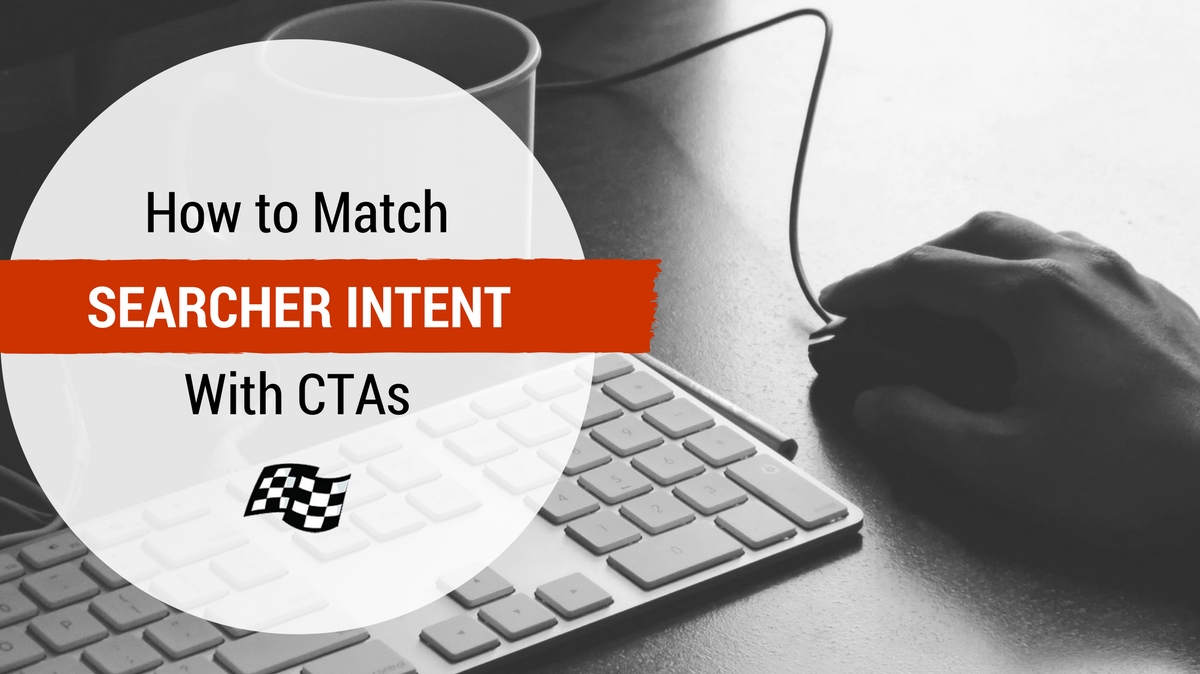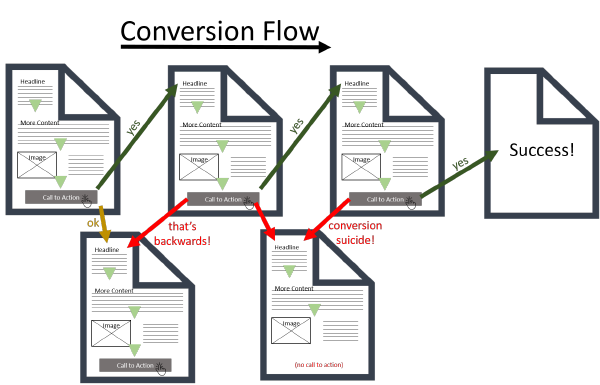
One of the key components to successful optimizing a page is fulfilling the visitor intent. The content is a big part of that, which I covered in a previous post. Another big part of having a successful landing page is providing the right actions for the visitor to take. Content isn’t enough, you have to literally spell out the action you want your visitors to take.
This means that every page on your site needs to have a primary call-to-action. You can also add one or two supporting calls-to-action, but it’s this primary action that is most critical. That’s where you want your visitors to go. The supporting actions are only there to keep them engaged if they’re not ready to take the primary action.
Keep the Visitor Moving Forward
The key with any call-to-action is to keep the visitor moving closer and closer to the final conversion that you want them to take. This may be one click or several clicks away, depending on the page. But every action should move the visitor forward (or at least laterally) toward the goal.
As the reader gets to the bottom of one page, the action needs to take them to the next step in the conversion/buying process. The goal is to propel readers forward. If your page fails to do that — either the reader doesn’t move forward or they move backward in the process – your page has failed.

What Action Is The Right Action?
Aside from actually being included, the most critical aspect of the call-to-action is that it’s the right call-to-action. The wrong action will send the visitor backward or cause them to disengage with the site completely. But the right action will continue to move them forward through the conversion process.
Determining what type of action goes back to searcher intent. At this point, you should have delivered visitors to the right page depending on the intent of their keyword. Now the CTA has to match up to the type of page you bought them to.
- The researcher should have landed on a category page. The primary action for them is to move to the shopping phase (sub-category page).
- The shopper should have landed on a sub-category page. The primary action for them is to move to the buying phase (product page).
- The buyer should have landed on a specific product page. Now you want to move them to the purchase phase (“Buy” or “Add to Cart” primary CTA).
It’s critical that you don’t send a buyer back to a research intent page. That’s backward, and disengages them from the conversion process. The right action is the one that moves them forward.
All or Nothing
Searcher intent must start at the very beginning of your content and follow through all the way to the CTA. Content that fails to move the visitor to the next phase fails altogether.

